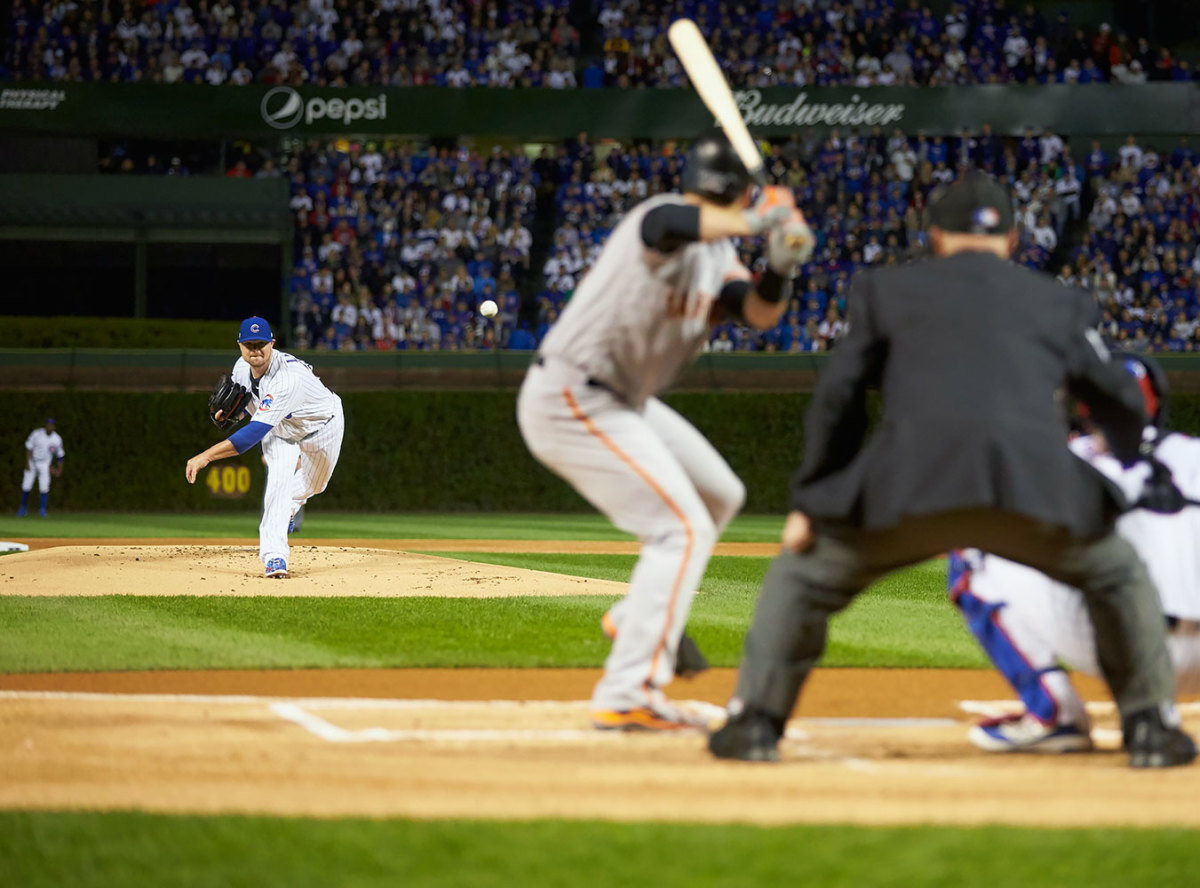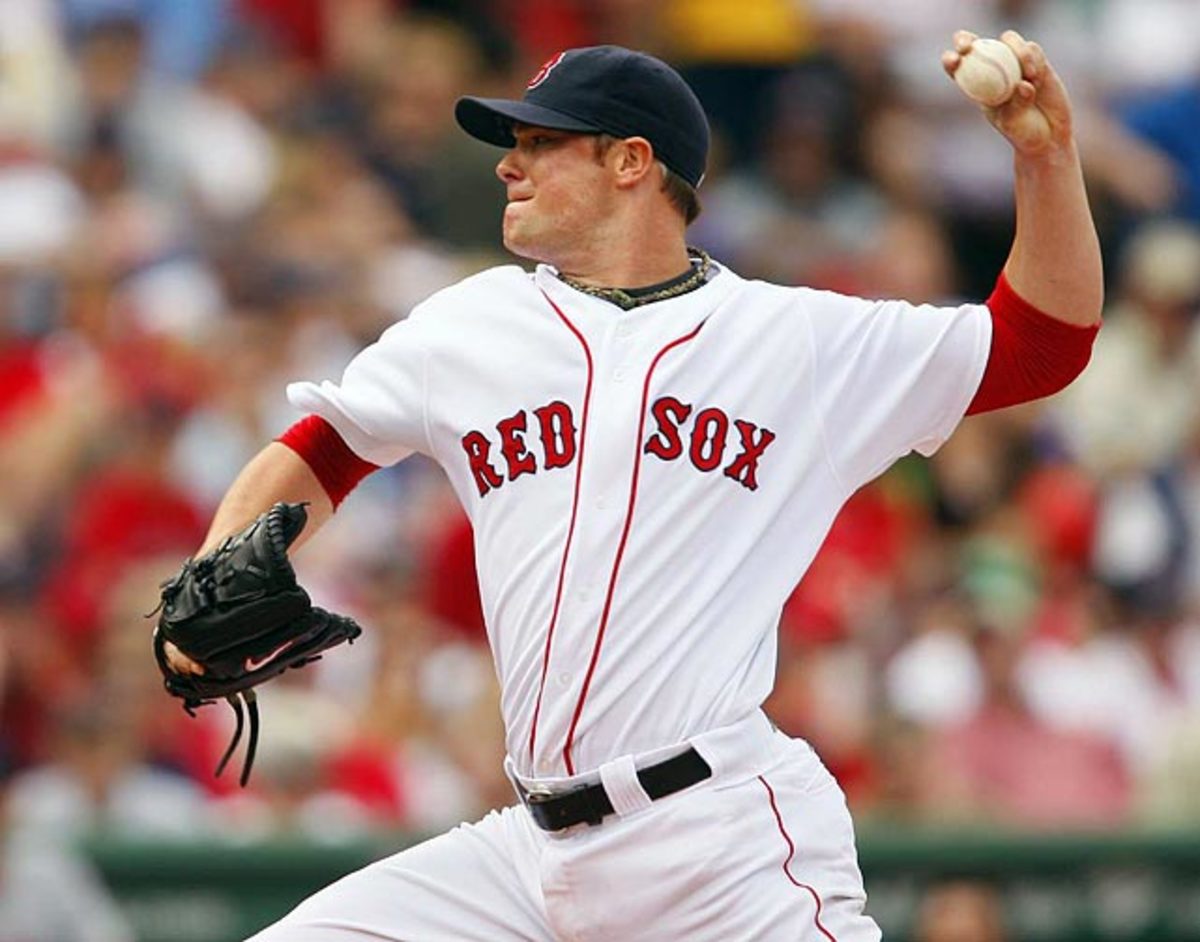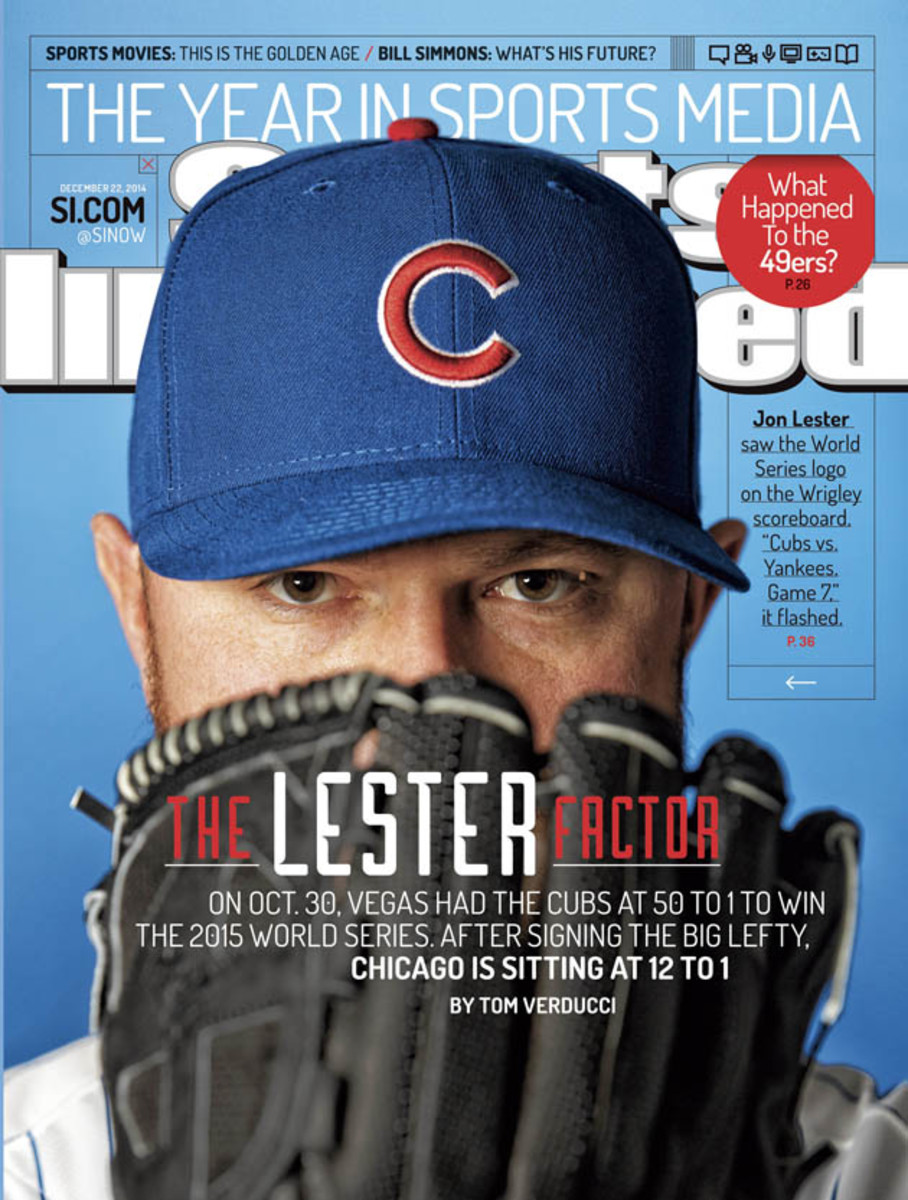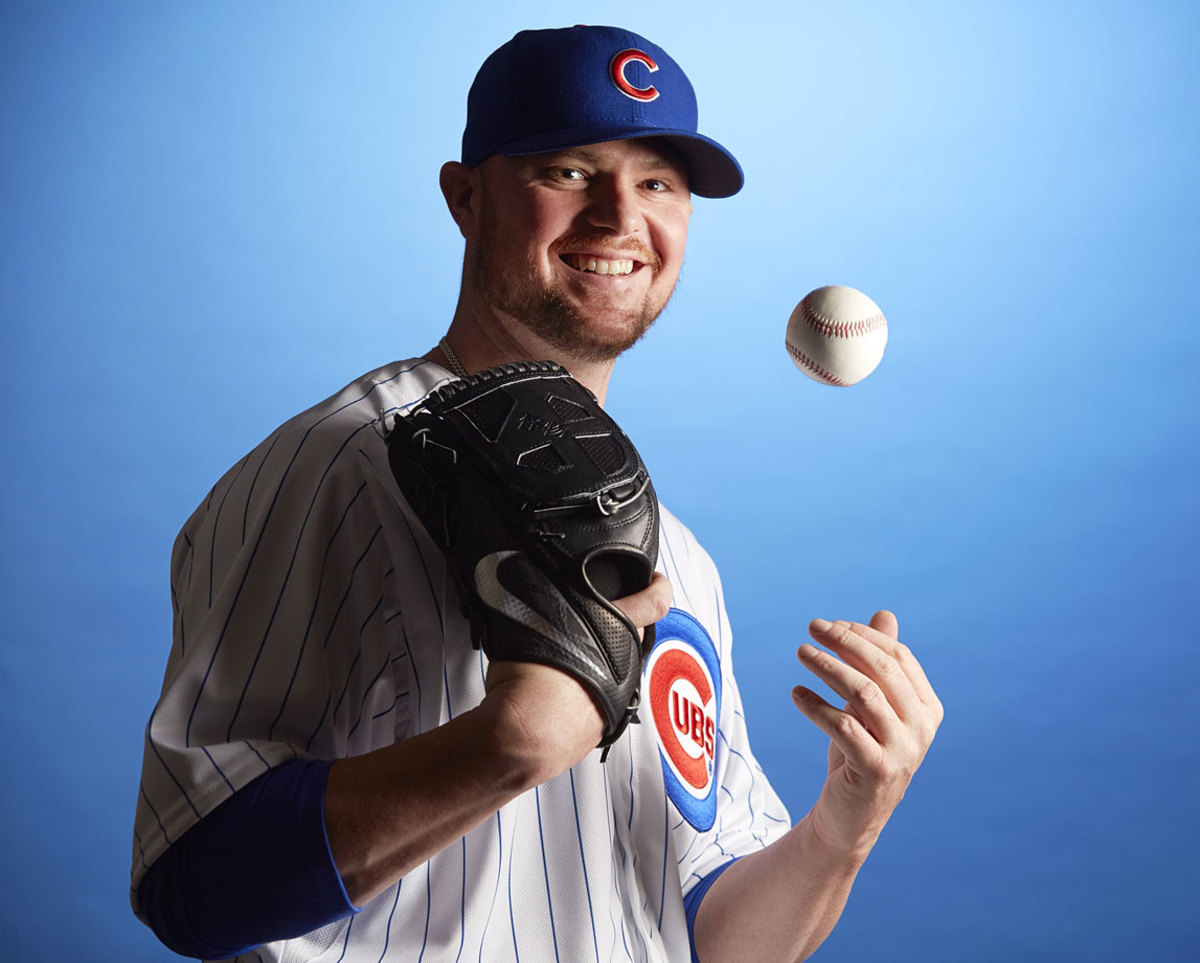Jon Lester’s Epic Baseball Story Comes to an End

The baseball life of Jon Lester is an epic story, as if an amalgam of several baseball lives. He overcame a rare form of non-Hodgkin's lymphoma and a mental block about throwing to bases. He pitched in World Series clinchers for the Cubs and Red Sox. He won 200 games and earned $199 million.

But ask Theo Epstein about his favorite Jon Lester story and his mind goes to a small moment, away from the glamour and glory that the kid from Tacoma earned but never flaunted. Epstein, as a front office assistant, and Lester, as a second-round draft pick, joined the Red Sox three months apart in 2002. They reunited after the 2014 season when Epstein convinced Lester to sign as a free agent with the last-place Cubs rather than with the Giants or Red Sox, teams that had won four of the previous five World Series.
“The Jon Lester moment I keep coming back to is when 18-year-old Anthony Rizzo came by Fenway right before starting his cancer treatments in 2008,” Epstein says. “Lester, himself just 24, had beat cancer the previous year and was in the early days of his first great season as a big leaguer.
“Jon came to [manager Terry Francona]’s office and spent half an hour reassuring and encouraging Rizzo in a way Tito and I never could. It made such a big impact on Anthony, and was the first time I saw the caring, thoughtful, generous side of Jon that became such a central part of his role in the clubhouse and his personality behind the scenes.”
Lester pitched 16 major league seasons, the last two checkered by COVID-19 protocols and a decline in what had been his rock-solid stuff. The grind of those seasons convinced Lester he no longer wanted to pitch, and so he announced he is retiring.
There are many ways to describe Lester. He threw with near perfect mechanics. He is one of only nine lefthanders ever to make 31 starts or more 12 times. He has the fourth-best winning percentage (.631) of any lefthander who won at least 200 games, behind only Whitey Ford, Lefty Grove and Randy Johnson.
He was a big-game pitcher who in seven postseason-clinching games posted a 2.66 ERA. By sheer determination, which is how he did most everything, Lester turned himself from a historically awful hitter into a rather good one. He had one of the great game faces on the mound, what with his chin rested on his glove hand as he peered in for the next sign, like a Vegas card shark who gave away nothing but supreme confidence. In that way, and in many big moments, he was like his pitching doppelgänger, Andy Pettitte. Both are borderline Hall of Famers.
But the best way to describe Lester is not with a number. It is as a great teammate. In the confines of a baseball clubhouse, which over a long season takes on the tension and pressure of a six-month submarine deployment, there is no bigger compliment than that. Lester won. He wanted the ball. He prepared himself physically and mentally with intensity. Teammates not only noticed the way of Lester, but also, they copied it.

If you want to tell the story of the most meaningful sports championship in our lifetimes, which is the story of the 2016 Chicago Cubs, a good place to start is Nov. 18, 2014. As I detailed in The Cubs Way, that’s when Epstein sold Lester on signing with the Cubs in his “recruiting room,” a wood-paneled room in the Cubs’ offices filled with memorabilia, photographs and a scale model of what Wrigley Field would look like after a four-year renovation project. Only two weeks earlier, Epstein sent a “recruiting package” to Lester’s home, which included camo Cubs gear (owing to Lester’s love of hunting), wine (another passion) and a slickly produced video that showed Lester, via the magic of CGI, beating the Yankees to clinch a World Series championship for the Cubs.
Though Buster Posey and Brian Sabean of the Giants and Red Sox owner John Henry would all ring his doorbell in Georgia to try to convince him to sign with their team, Lester chose the last-place Cubs. A year earlier, Epstein had tried to sign Masahiro Tanaka. When Tanaka signed with the Yankees, Epstein kept the money in his pocket for Lester. Had Lester said no, Epstein would have kept the money squirreled away for another season and the rise of the Cubs would have been postponed by another year. Lester jumpstarted a franchise that had finished in last place three straight years. Chicago gave Lester a six-year, $155 million contract, which to some appeared risky given he was to pitch the next season at 31.
But Epstein knew from his days with the Red Sox that Lester had one of the most structurally sound shoulders any MRI had ever revealed. He knew about Lester’s clean mechanics. He knew about his work ethic.
“We believe nobody has perfect mechanics,” Epstein told me, “but according to the model we hold up when we send pitchers to biomechanical labs his mechanics rate [is] higher than anybody we’ve seen. Does that fully mitigate the risks? No, but it helps. And it helps knowing he’s been on a state-of-the-art shoulder [conditioning] program since he was 18; it helps knowing the family and the workload and what makes him tick. All that stuff helps. They are small factors in mitigating the risk. He has a tremendous pitcher’s body with ideal mechanics, he wasn’t abused as an amateur as a pitcher growing up in cold weather, and he has a very strong and undamaged shoulder.”
Over the next six years, Lester gave the Cubs more than 1,000 innings and 77 wins. Only three other pitchers did so for their respective teams in that window: Max Scherzer, Zack Greinke and Gerrit Cole. With the inclusion of that 2016 championship, the signing of Lester is one of the great free-agent returns on investment, right there with Randy Johnson, Greg Maddux and Max Scherzer.

Lester succeeded despite that mysterious mental block he had when it came to throwing to bases. In 2015, his first year with the Cubs, Lester allowed 44 stolen bases and an 80% success rate from base stealers. Cubs manager Joe Maddon would bring Lester to a back field in spring training to work on his pickoff throws. The drill would go well enough to give some hope that Lester was getting better. But once Lester tried to throw to first in games, the problem immediately resurfaced.
Maddon quickly decided on a way forward. He pivoted. Rather than focusing on what Lester could not do—throw accurately to first base—he focused on what Lester, Rizzo and catcher David Ross did well. Lester was excellent at varying his hold times and slide-stepping to the plate. Rizzo and Ross were adept at executing back picks to keep a runner honest at first base. Maddon and the Cubs developed this “triangle defense” to defend the running game. It worked. From 2016 through '20, his last five years with the Cubs, Lester allowed an average of only 15 stolen bases and a 64% success rate, which made him better than average at stopping runners.
Lester famously relieved Kyle Hendricks in 2016 World Series Game 7. He came in to pitch to Jason Kipnis and Francisco Lindor, and did his job well: Kipnis hit a 30-foot roller and Lindor struck out. But somehow two runs scored. Ross threw away Kipnis’s roller and saw a wild pitch from Lester bounce so far off his face mask that two runs scored. Lester was in line to be the winning pitcher when he turned over a three-run lead to Aroldis Chapman in the eighth inning. That’s when a double by Brandon Guyer and a home run by Rajai Davis tied the game, setting the stage for the 8–7 Cubs win in 10 innings.
Sign up to get the Five-Tool Newsletter in your inbox every week during the MLB offseason.
Lester started and won the clinching game of the 2007 World Series. A big part of the appeal in signing with the Cubs was to create similar history to what he saw in Boston. Lester was a 20-year-old kid in Class-A ball in 2004 when Boston won the World Series for the first time in 86 years. He never forgot the impact of that championship.
“Those guys are legends in Boston,” Lester said when he signed with the Cubs. “I always use the comparison that Dave Roberts stole one base, and this guy hasn’t paid for a meal or drink since.
“The lure of bringing the World Series to [Chicago] and this team really interested me and my family. You go back to the ’04 Red Sox and think about the free agents they brought in and the players they traded for. Those guys are legends for the rest of their lives. You bring that [to Chicago] and that’s an exciting time to be a part of. I’m really interested in being part of that, of breaking that curse. I know what breaking a curse can do for a city and an organization. Hopefully I can be a part of that.”

Lester delivered. Few pitchers get to pitch as long as did Jon Lester. Fewer still get to impact epic baseball history the way Lester did. Just ask a teammate of his.
More MLB Coverage:
• Hall of Fame Tracker Is Improving the Cooperstown Conversation
• Solidarity and Betrayal: Inside Baseball’s First Major Labor War
• Bonds, Clemens, Schilling and Sosa Have Two Cracks at Hall of Fame in 2022
• How Should We Evaluate Andruw Jones’s Hall of Fame Case?
• Why Jimmy Rollins Belongs in the Hall of Fame
